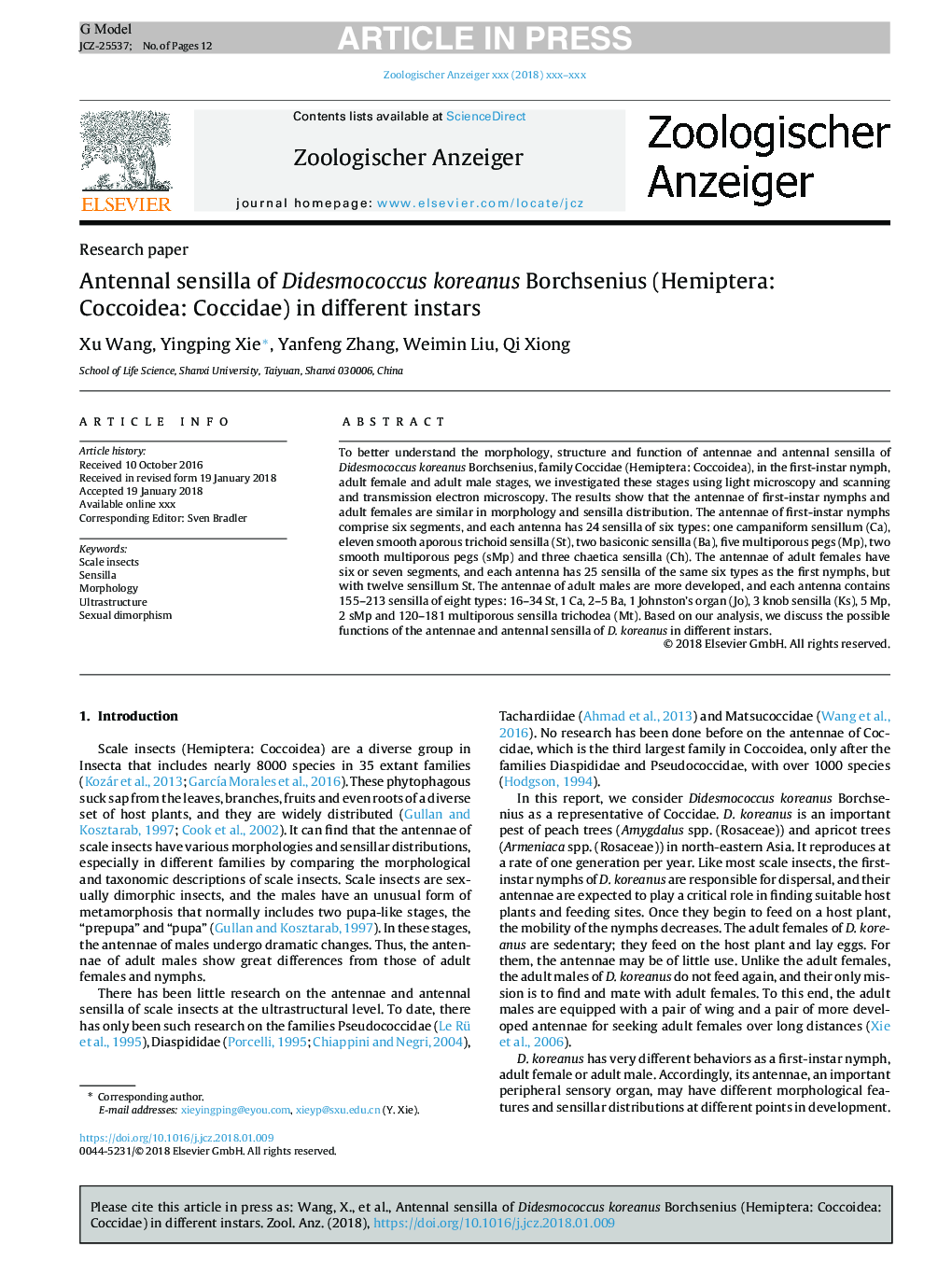| Article ID | Journal | Published Year | Pages | File Type |
|---|---|---|---|---|
| 8626739 | Zoologischer Anzeiger - A Journal of Comparative Zoology | 2018 | 12 Pages |
Abstract
To better understand the morphology, structure and function of antennae and antennal sensilla of Didesmococcus koreanus Borchsenius, family Coccidae (Hemiptera: Coccoidea), in the first-instar nymph, adult female and adult male stages, we investigated these stages using light microscopy and scanning and transmission electron microscopy. The results show that the antennae of first-instar nymphs and adult females are similar in morphology and sensilla distribution. The antennae of first-instar nymphs comprise six segments, and each antenna has 24 sensilla of six types: one campaniform sensillum (Ca), eleven smooth aporous trichoid sensilla (St), two basiconic sensilla (Ba), five multiporous pegs (Mp), two smooth multiporous pegs (sMp) and three chaetica sensilla (Ch). The antennae of adult females have six or seven segments, and each antenna has 25 sensilla of the same six types as the first nymphs, but with twelve sensillum St. The antennae of adult males are more developed, and each antenna contains 155-213 sensilla of eight types: 16-34âSt, 1 Ca, 2-5 Ba, 1 Johnston's organ (Jo), 3 knob sensilla (Ks), 5 Mp, 2 sMp and 120-181 multiporous sensilla trichodea (Mt). Based on our analysis, we discuss the possible functions of the antennae and antennal sensilla of D. koreanus in different instars.
Related Topics
Life Sciences
Agricultural and Biological Sciences
Animal Science and Zoology
Authors
Xu Wang, Yingping Xie, Yanfeng Zhang, Weimin Liu, Qi Xiong,
